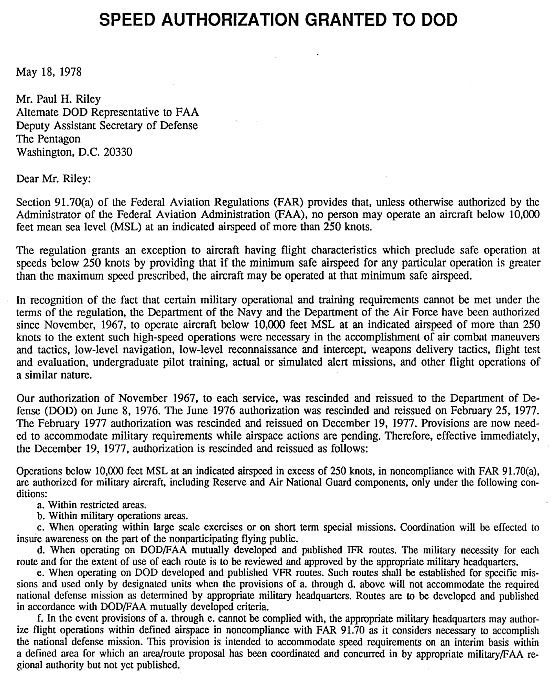Hacker15e
Who am I? Where are my pants?
I was under the impression that military can do whatever they want, FAA rules don't apply to them. I know that when I was at SLC in a small plane there were some F-22's that were taking off out of SLC. The ATC asked them if they were going to stay within the regulated speed and the pilot responded he wouldn't go more than 100 over it. I was told that the ATC can't tell the military what they can and can't do. However, if the pilots get a major report from an ATC sent to their CO, they could be in trouble. Is that correct or am I wrong?
No, that is false. But the real answer isn't quite so simple:
You are correct that military pilots do not follow FAA regulations. BUT military flying regulations closely follow the 14 CFR rules, and are written (negotiated) with the FAA's direct involvement. While a military pilot (who does not operate with an FAA license) does not fall directly under FAA regulations, he DOES have to abide by the military regs (again, which closely mirror FAA rules and are negotiated with the FAA).
Sometimes the military flying rules are more restrictive than the FAA, and sometimes they are less restrictive. But always they are a product of an agreement with the FAA, since we all share the same airspace.
With respect to the airspeed, there is a specific Letter of Agreement between the DoD and the FAA for airspeed limit waivers for many types of aircraft. The LOA is because some aircraft have minimum safe airspeeds mandated by technical order that are faster than the FAA limit of 250 below 10K. In the F-15E, that waivered limit is usually 300 knots. For some other aircraft (like the Raptor) the waivered limit is 350 knots. So, the fast jets are not immune to following rules, they're simply operating by a different (but still specific) set of limitations.
So, military jets have to "play well with others" -- we have to follow ATC direction just like everyone else. Some areas, however, we have slightly different limitations.

